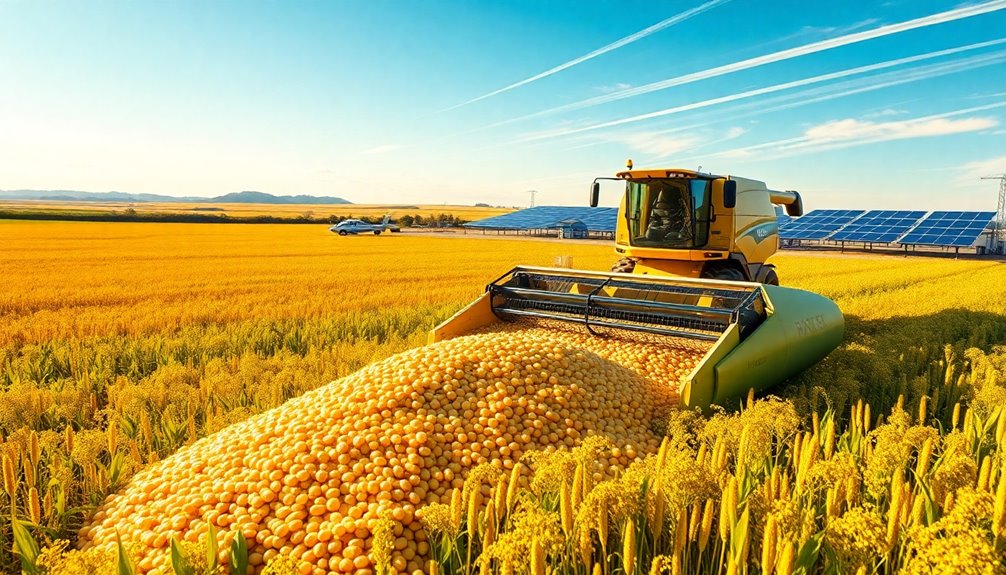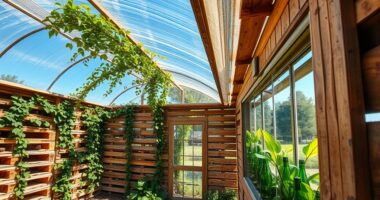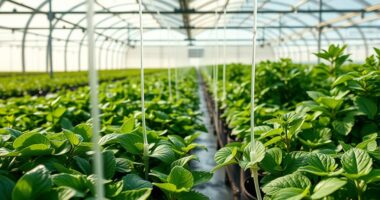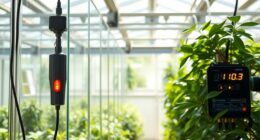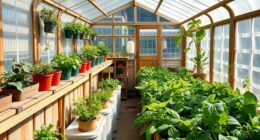Streamlining the supply chain for winter oilseeds like pennycress, camelina, and carinata is crucial for boosting sustainable aviation fuel (SAF) production. You'll need to integrate these feedstocks with traditional jet fuel systems, optimizing logistics and infrastructure to lower costs and improve efficiency. Collaboration between producers and airlines plays a key role in ensuring sustainability. By focusing on innovative solutions and strategic processing locations, you'll help usher in a greener future for aviation. There's more to discover about this exciting transition.
Key Takeaways
- Integrate winter oilseed supply chains with traditional jet fuel systems to enhance efficiency and reduce costs in SAF production.
- Establish strategic processing locations to optimize the conversion of pennycress, camelina, and carinata into sustainable aviation fuel.
- Implement robust logistics and infrastructure to streamline the handling and transportation of winter oilseeds throughout the supply chain.
- Ensure feedstock sustainability criteria are met to maintain the long-term viability of winter oilseeds in SAF production.
- Leverage government incentives and supportive policies to address high production costs and promote widespread adoption of SAF.
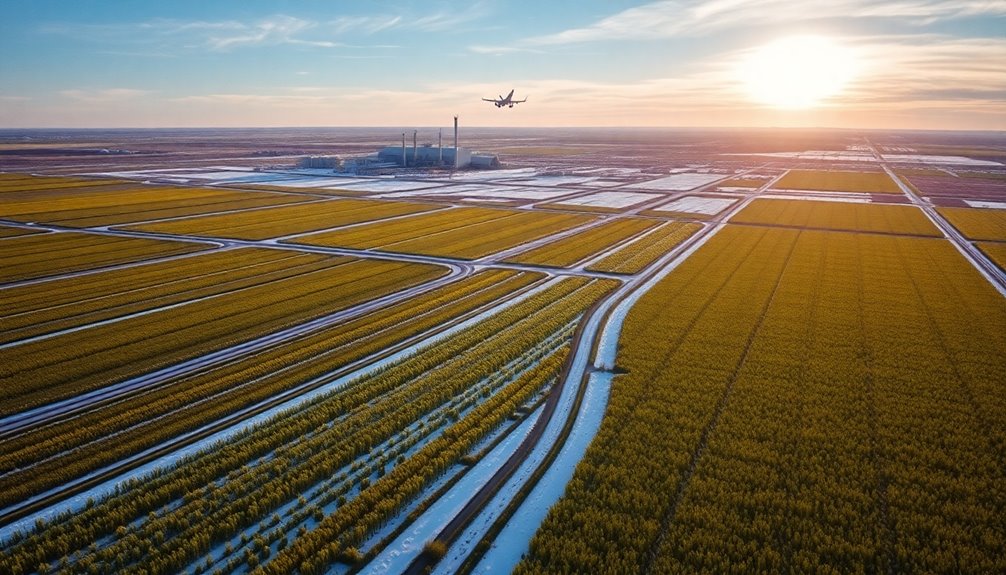
As the aviation industry faces increasing pressure to reduce its carbon footprint, the supply chain for sustainable aviation fuel (SAF) production is becoming more critical than ever. Utilizing winter oilseeds like pennycress, camelina, and carinata can significantly boost SAF production. These crops, known for their oil content and hardiness in colder climates, represent a promising feedstock option that can help meet future energy demands.
To successfully integrate these oilseeds into the SAF supply chain, you need to consider the complexities involved. While early SAF production relied on segregated supply chains, the current trend is toward integrating SAF with traditional jet fuel systems for improved efficiency. You'll find that developing strategic processing locations can minimize costs and enhance output, ensuring that the supply chain remains robust and responsive. Moreover, strict criteria must be met for feedstock sustainability to ensure the long-term viability of these crops in the SAF production process.
Successfully integrating winter oilseeds into the SAF supply chain requires strategic processing and a shift towards efficiency.
However, scaling production presents its challenges. Limited feedstocks and production costs remain significant hurdles. That's where innovative solutions come into play. Exploring new technologies, such as power-to-liquid processes, can pave the way for more efficient production methods. Additionally, government incentives and supportive policy frameworks are essential to help bridge the cost gap, making SAF a more viable option.
It's also crucial to streamline logistics and enhance infrastructure to handle these winter oilseeds effectively. By optimizing supply chains and ensuring the availability of diverse feedstocks, you can stabilize the production process. Collaborative models between producers and airlines will further facilitate successful integration, allowing SAF to become a mainstream fuel source.
Ultimately, investing in the SAF supply chain, particularly through winter oilseeds, could lead to significant economic and environmental benefits. With the potential to reduce greenhouse gas emissions by up to 80% compared to traditional fuels, the promise of SAF is bright. By taking these steps, you contribute to a more sustainable future for aviation, ensuring that the industry can thrive while protecting our planet.
Frequently Asked Questions
What Is the Environmental Impact of Growing Pennycress, Camelina, and Carinata?
Growing pennycress, camelina, and carinata offers significant environmental benefits.
You'll find that these crops require less fertilizer and pesticides, minimizing chemical runoff. Their drought tolerance and ability to be planted as winter cover crops help conserve water and reduce soil erosion.
Additionally, their lower energy needs for production compared to traditional crops contribute to reduced greenhouse gas emissions.
How Do These Oilseeds Compare in Yield and Profitability?
When you compare pennycress, camelina, and carinata, you'll find significant differences in yield and profitability.
Carinata stands out with a yield of about 2,800 kg/ha and a higher oil content of 45%.
Camelina lags with 1,178 kg/ha and 37% oil, while pennycress offers a middle ground at 2,036 kg/ha and 32% oil.
Integrating carinata into your crop rotations can boost your farm's profitability significantly compared to the others.
What Are the Main Challenges in Cultivating These Crops?
When you cultivate crops like pennycress, camelina, and carinata, you'll face several challenges.
Soil moisture is crucial for germination, so timing your planting is essential. You might also encounter uneven maturation, affecting harvest timing.
Equipment limitations can hinder efficiency, and competing weeds may require herbicide use.
Additionally, managing seed persistence and nutrient response will be vital for achieving economic viability and maintaining productivity throughout the growing season.
Are There Specific Regions Best Suited for Growing These Oilseeds?
Did you know that camelina can yield up to 1,500 pounds of seeds per acre in ideal conditions?
If you're considering growing oilseeds, focus on temperate regions for pennycress and carinata, as they thrive in cooler climates.
Camelina, on the other hand, is drought-tolerant and works well in areas with limited rainfall.
Ensuring adequate moisture and the right temperatures will boost your chances of a successful crop.
How Can Farmers Get Involved in Sustainable Aviation Fuel Production?
You can get involved in sustainable aviation fuel production by cultivating crops like pennycress, camelina, and carinata, which are well-suited for biofuels.
Partner with industry leaders to access resources and market opportunities.
Consider using advanced agricultural technologies to enhance your crop yields and sustainability practices.
Stay informed about market demand and regulatory frameworks that support SAF, ensuring you can maximize your revenue while contributing to a greener future.
Conclusion
In the quest for sustainable aviation fuel, streamlining the supply chain for winter oilseeds like pennycress, camelina, and carinata isn't just a strategy—it's a lifeline for the future of aviation. By optimizing these resources, you're not only reducing carbon footprints but also propelling the industry towards greener skies. Embracing these crops can turn the tide in sustainable fuel production, making your contribution to a cleaner planet as vital as the air we breathe.
